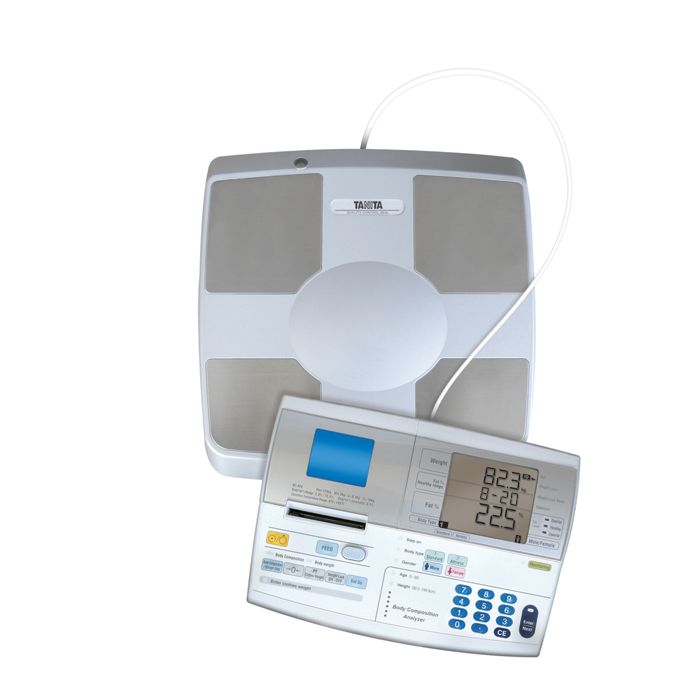Body composition analysis
Unlocking Your Body’s Secrets: Exploring Body Composition Analysis.

What is it and how is it done?
Body composition analysis is a method of evaluating body fat, muscle mass, and body fluids.
Based on the method of bioelectrical impedance, low-intensity alternating current is applied to the body of the subject and measures its conductivity.
Assuming that body fluids are good conductors of electricity and fat is a poor conductor, it is possible to calculate fat percentage, muscle mass percentage, and the percentage of body fluids. In practice, this method is simple, painless, and very quick.
The procedure is prohibited in cases where the client is pregnant, breastfeeding, or lactating, and for those with an electronic medical implant, such as a pacemaker.
Why body composition analysis?
Look beyond the number on the scale and understand what your body is really made of.
Scales, as precise as they can be, cannot assess the physical condition of a person.
Determining the percentage of fat in the body is important because it is the most reliable diagnostic indicator of obesity.
Furthermore, applying body composition analysis periodically gives you a true indicator of your inner health by identifying changes made internally in your body as a result of a healthy diet intervention and exercise implementation.
For example, we can identify and evaluate weight loss (i.e., if the person loses body fat or loses fluids and muscle mass).
The ratio between muscle mass and body fat is more meaningful and important than body weight itself.
Tanita SC-330
The device ‘TANITA,’ a modern body composition analyzer SC-330, is used for analyzing:
- Weight
- Body fat %
- Fat mass
- Fat free mass
- Muscle mass
- Body water
- Body water (TBW) %
- Bone mass
- Basal metabolic rate (BMR)
- Metabolic age
- Visceral fat rating
- BMI
- Ideal body weight
- Degree of obesity

How can I be prepared beforehand for the examination?
To achieve a correct measurement, you should follow the steps below before measuring:
- Do not consume food for 4 hours before the measurement
- Do not consume liquids for at least 2 hours before the measurement
- Do not perform exhaustive exercise for at least 24 hours before the measurement
- Do not consume alcohol for at least 24 hours before the measurement
- For women, it is preferable not to be menstruating at the time of measurement
